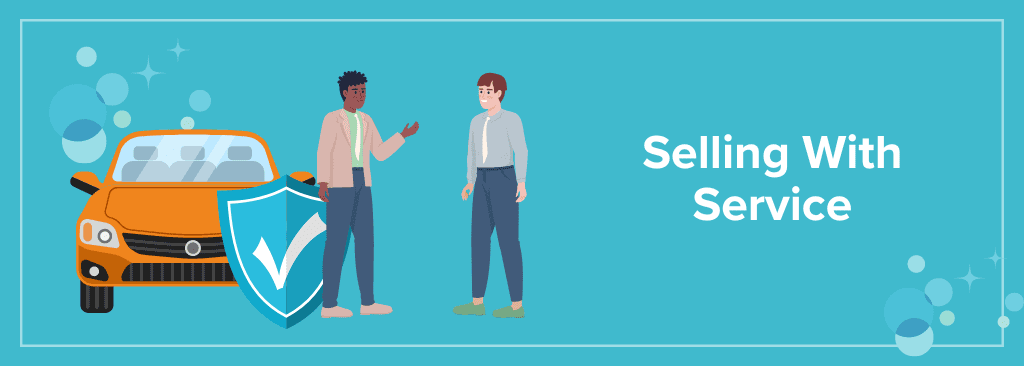Selling With Service: The Key to Long-Term Customer Relationships
My auto insurance came up for renewal, and I was looking at renewing it. That’s when one of my uncles, an insurance advisor, advised me to change my insurance to the company he represents.
In terms of features, I didn’t find anything different between these two companies. Given that it was my uncle, I decided to switch it to the company he represented.
As luck would have it, my automobile met with an accident shortly when I was out of town. I had to tow it to a nearby authorized service center. There, I was provided with an estimate of 70K, but the appraiser from the insurance company agreed only for 27K.
I called up my uncle to help me here.
He said that we can approach the ombudsman and increase the claim. Trusting him, I went ahead with the service and claimed 27K. After this, I appealed to the ombudsman, and they increased the claim amount by another 3K.
It added up to 30K in total, and I felt cheated.
What did I do the next year?
Needless to say, I went back to my original insurance provider.
Any sales have to be associated with service.
This is what the customer service expert, Shep Hyken, has to say:
I’m often asked to be the keynote speaker at sales meetings. Most of the audience expects to learn a new sales technique or tactic; instead, I teach customer service and experience techniques and tactics. I refer to this as Selling with Service. I share how to create the experience that makes customers want to do business with the company, not just buy the product. That’s also the experience that gets customers to say, “I’ll be back!”
How Do You Implement Selling With Service?
Let me list some examples of great brands implementing service as a part of sales and the strategies that can be learned from them.
Build Trust Through Transparency – Zappos
Zappos is known for its transparency in customer interactions. The company encourages representatives to be authentic and engage with customers personally. This builds trust and strengthens the customer-company relationship.
Encourage your sales team to be transparent and honest with customers. Provide information about products and services, address concerns openly, and build a foundation of trust.
Create Personalized Experiences – Amazon
Amazon’s recommendation engine is a prime example of personalization. By analyzing customer’s preferences and purchase history, Amazon suggests relevant products, enhancing the overall shopping experience.
Leverage customer data to personalize interactions. Tailor recommendations, offers, and communication per individual preferences to make customers feel understood and valued.
Proactive Problem-Solving – Ritz Carlton
Ritz-Carlton empowers its staff to resolve issues on the spot. If a guest has a problem, any employee can fix it without needing approval. This proactive approach to problem-solving ensures a positive experience for the customer.
Empower your sales and customer service teams to address issues immediately. Provide them with the tools and authority to promptly resolve customer problems, showing their satisfaction is a top priority.
Focus on Long-Term Relationships – Salesforce
Salesforce, a customer relationship management (CRM) platform, emphasizes building long-term relationships. Their platform is designed to help businesses manage and nurture customer relationships over time.
Shift the focus from one-time transactions to building long-term relationships. Encourage your sales team to view each interaction as an opportunity to lay the foundation for a lasting customer relationship.
Active Listening and Understanding Needs – Nordstrom
Nordstrom is known for its exceptional customer service, and a key element is active listening. Sales associates take the time to understand customers’ needs and preferences, ensuring a personalized shopping experience.
Train your sales team to listen to customers actively. Understand customer pain points, preferences, and goals. This information can be used to tailor the sales approach and provide solutions that truly meet their needs.
Post-Sale Follow-Up – Apple
Apple sends post-sale follow-up emails asking customers about their experience and satisfaction. This not only gathers valuable feedback but also shows that the company cares about the customer’s post-purchase journey.
Implement a post-sales follow-up process. Check in with customers after a purchase to ensure satisfaction, address concerns, and express gratitude for their business. This ongoing communication reinforces a positive customer experience.
While we have spoken about Selling with Service and focused on sales and customer service functions, customer experience is the responsibility of every function.
Customer experience begins long before a customer even purchases till the post-purchase process.
Remember that the goal is to make customers feel valued and understood, creating a positive and memorable experience beyond the initial transaction.
